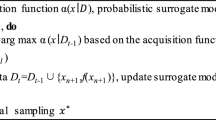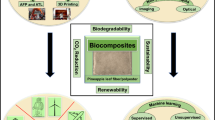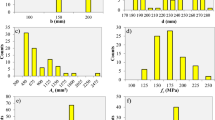Abstract
In the present study, various artificial neural network (ANN) training algorithms were implemented for finite element technique (FEM) modeling of the composites wear behavior. The experimental results show that the weight losses of the composites are less than that of unreinforced alloy. It is believed that incorporation of hard particles to aluminum alloy contributes to the improvement of the wear resistance of the base alloy to a great extent. Hard particles take part in resisting penetration, cutting and grinding by the abrasive and protect the surface. It is noted that the increase in the weight fraction of B4C particles improves the wear resistance of the composite. The wear resistance increases with increasing the size of reinforcing particles. The FEM method is used for discretization and to calculate the transient temperature field of quenching. During the ANN training process, the weights and biases in the network are adjusted to minimize the error and to obtain a high-performance in the solution. The test set was used to check the system accuracy of each training algorithm at the end of learning. It was observed that Bayesian regularization learning algorithm gave the best prediction.
Similar content being viewed by others
References
A. M. Samuel, A. Gotmare, and F. H. Samuel, Compos. Sci. Technol. 53, 301 (1995).
S. Chung and B. H. Hwang, Tribol. Int. 27(5), 307 (1994).
F. M. Hosking, F. Folgar Portillo, R. Wunderlin, and R. Mehrabian, J. Mater. Sci. 17, 477 (1982).
S. C. Lim, M. Gupta, L. Ren, and J. K. M. Kwok, J. Mater. Process. Technol. 89/90, 591 (1999).
P. N. Bindumadhavan, T. K. Chia, M. Chandrasekaran, H. K. Wan, L. N. Lam, and O. Prabhakar, Mater. Sci. Eng., Ser. A 315, 217 (2001).
M. Roy, B. Venkataraman, V. V. Bhanuprasad, Y. R. Mahajan, and G. Sundararajan, Metall. Trans., Ser. A 23, 2833 (1992).
S. Skolianos and T. Z. Kattamis, Mater. Sci. Eng., Ser. A 163, 107 (1993).
M. K. Surappa, S. V. Prasad, and P. K. Rohatgi, Wear 77, 295 (1982).
P. N. Bindumadhavan, H. K. Wah, and O. Prabhakar, Wear 248, 112 (2001).
J. K. M. Kwok and S. C. Lim, Compos. Sci. Technol. 59, 55 (1999).
S. Das, D. P. Mondal, and G. Dixit, Metall. Mater. Trans., Ser. A 32, 633 (2001).
A. M. Hassan, A. Alrashdan, M. T. Hayajneh, and A. T. Mayyas, J. Mater. Proc. Technol. 209, 894 (2009).
F. Karimzadeh, A. Ebnonnasir, and A. Foroughi, Mater. Sci. Eng., Ser. A 432, 184 (2006).
Necat Altinkok and Rasit Koker, Mater. Design 25, 595 (2004).
Swadesh Kumar Singh, K. Mahesh, and Amit Kumar Gupta, Mater. Design 31, 2288 (2010).
Paulo J. Lisboa and Azzam F. G. Taktak, A Systematic Review, Neural Networks 19, 408 (2006).
M. Ostad Shabani and A. Mazahery, Int. J. Appl. Math. Mech. 7, 89 (2011).
M. O. Shabani, A. Mazahery, A. Bahmani, P. Davami, and N. Varahram, Kovove Mater. 49, 253 (2011).
S. H. Mousavi Anijdan, A. Bahrami, H. R. Madaah Hosseini, and A. Shafyei, Mater. Design 27, 605 (2006).
Rey-Chue Hwang, Yu-Ju Chen, and Huang-Chu Huang, Expert Systems Appl. 37, 3136 (2010).
Livan Fratini, Gianluca Buffa, and Dina Palmeri, Comput. Struct. 87, 1166 (2009).
R. Hamzaoui, M. Cherigui, S. Guessasm, O. ElKedim, and N. Fenineche, Mater. Sci. Eng., Ser. B 163, 17 (2009).
N. S. Reddy, A. K. Prasada Rao, M. Chakraborty, and B. S. Murty, Mater. Sci. Eng., Ser. A 391, 131 (2005).
S. Nagarajan and B. Dutta, Compos. Sci. Technol. 59, 897 (1999).
J. C. Viala, J. Bouix, G. Gonzalez, and C. Esnouf, J. Mater. Sci. 32, 4559 (1997).
W. Zhou and Z. M. Xu, J. Mater. Proc. Technol. 63, 358 (1997).
D. J. Lloyd and B. Chamberian, ASM, Illinois, 1988, pp. 263–269.
S. Ray, Proceedings of the Survey on Fabrication Methods of Cast Reinforced Metal Composites, ASM/TMS, 1988, pp. 77–80.
F. Rana and D. M. Stefanescu, Metall. Mater. Trans., Ser. A 20, 1564 (1989).
K. C. Ludema, Wear 100, 315 (1984).
S. C. Lim and M. F. Ashby, Acta Meta. 35, 1 (1987).
K. Razavizadeh and T. S. Tyre, Wear 79, 325 (1982).
Author information
Authors and Affiliations
Corresponding author
Additional information
The article is published in the original.
Rights and permissions
About this article
Cite this article
Mazahery, A., Shabani, M.O. The accuracy of various training algorithms in tribological behavior modeling of A356-B4C composites. Russ. Metall. 2011, 699–707 (2011). https://doi.org/10.1134/S0036029511070196
Published:
Issue Date:
DOI: https://doi.org/10.1134/S0036029511070196




